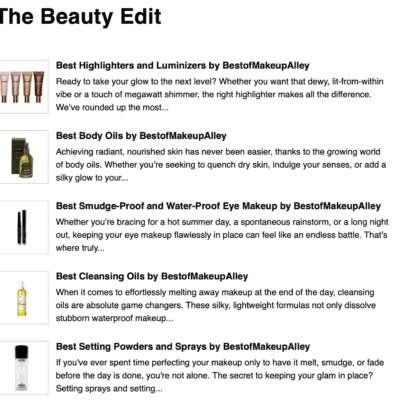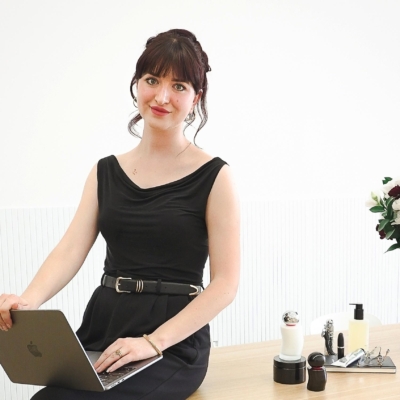
How Emerging Beauty Brands Can Mitigate Payment Risks At Retail
Retail is a risky business for emerging beauty brands, but when retailers stretch payment terms or fail to pay bills entirely, it can deal a serious blow to brands’ long-term financial well-being.
Past due bills and non-payment has been a sticking point for large and small retailers of late as they struggle with liquidity, rising prices and moderating consumer spend. Saks Fifth Avenue’s e-commerce business started falling behind on payments last year and owe countless small vendors upwards of tens of thousands of dollars each for sold products. While some brands have started to receive payment from the retailer, many are still waiting.
Sarah Broyd, partner at Clarkston Consulting, explains, “There’s this price pressure that companies are trying to balance now. Labor’s more expensive, supply chains are more expensive, and so companies are starting to look at cutting budgets and cutting spend where they can. But retail overall is down and when that happens you start to see delinquent payments or requests to stretch payment terms.”
Amanda Schuler, founder of skincare brand Ember Wellness, points out that emerging brands can often get swept up in the excitement of working with a large retailer and fail to negotiate contractual terms properly upfront.
“You will review the terms but are less likely to negotiate as you are focused more on getting the deal done, which can end up being a huge challenge down the road,” she says. “If you take the time upfront to negotiate even a little bit, I think you will gain more respect and establish a stronger long-term relationship.”
While it would be impossible to fully eliminate the risks associated with retail partnerships, or to completely avoid non-payment, there are a number of controls that emerging brands should be aware of in order to ensure a successful partnership with a retailer. We go over some ahead.

Contractual And Payment Controls
While retailers typically ask for longer payment terms, such as 90 days after receiving a vendor’s invoice, Broyd advises emerging brands to consider asking for 30-day or 45-day payment windows. Brands can also offer discounts to incentivize early payments and keep cash flow moving, such as a 2% discount for payments made within 10 days of receiving an invoice. On larger orders, or with first-time clients, negotiating a portion of the payment upfront can help safeguard against cash flow disruptions. Broyd specifies between 10% and 20% as the common range for new vendors in the retail industry.
“If a retailer has less risk tolerance, the percentage could go down and then things like order size and previous relationships could impact the percent as well,” she says.
While large retailers often have the upper hand in negotiations with emerging brands, they can still be flexible. “But to a point,” notes Priscilla Camacho, VP of sales for bath, body and haircare brand Nopalera. “They will rarely go from net-90 to net-30, but you can generally meet in the middle.”
Based on that principle, Camacho has whittled down Nopalera’s payment window by 25% to 50% with several of the brand’s key retail accounts. Nopalera is stocked at Nordstrom, Credo, Free People, Terrain, Shopbop and across 400 independent boutiques in the United States. “You have to weigh the risk and reward and have a strong understanding of the company’s finances when going into these negotiations,” she says, adding that she’ll walk away from a partnership if she feels like it’s too big of a risk. She advises, “Getting someone with experience, like a salesperson who has a relationship with the buyers, would be a wise investment for a small brand.” Camacho points out that utilizing a lawyer to review retail contracts and make further suggestions for negotiation can also be helpful in the process.
Brands should understand as much as possible about a retailer’s payment history and financial well-being before entering into any large-scale agreements, says Broyd. Creditworthiness, liquidity ratios and overall financial stability are areas of particular importance. In addition to clearly outlining payment terms, contracts should also delineate penalties for late payments, like interest charges, as well as consequences for non-payment, like the right to reclaim products. Credit limits should also be established and continually adjusted, especially with higher-risk retailers. “Small vendors might not think to do some of these things,” Broyd mentions.
Ember Wellness, which is stocked at Free People, Formula Fig, CO Bigelow and Ssense, will hold back stock on reorders if a previous invoice hasn’t been paid in full by a retailer. “Our overall exposure is lessened then. This is the best case scenario, but of course isn’t always possible,” says Schuler.
Inventory Controls
Managing the flow of inventory into smaller, more frequent shipments is another way emerging beauty brands can keep consistent cash in their coffers. Broyd highlights consignment as a model that reduces the risk of overstocking and unsold products at a retailer. Consignment allows brands to keep ownership of their goods until they are sold by the retailer. Generally, consigned inventory is warehoused by the retailer.
That being said, retailers can still leave brands in the lurch if not transparent. “The thing that you have to be really careful about when you do consignment is making sure you get really accurate reporting and timely payment for the sold goods,” says Broyd. If not, she advises brands to consider conducting audits on their consigned inventory, the frequency of which is usually determined by a brand’s risk tolerance and the reliability of the retailer in question. In retail, quarterly audits are considered standard.
Consignment isn’t Camacho’s preferred model when working with retailers. However, she says, “if there is a pre-existing relationship and you can trust the partner, plus get paid in a timely manner—usually within 10-15 days after month’s end—I think it’s okay to position the brand and to test a new sales channel.”

Risk Mitigation Strategies
Non-payment may be unavoidable with some retailers but brands that are covered by credit insurance can offset some of those potential losses, especially with large or high-risk retail accounts. However, emerging brands with limited budgets must take into account the high cost associated with such a purchase. Although the costs can vary depending on the industry, the size of the business, the creditworthiness of the applicant, policy structure, among other factors, Broyd pinpoints monthly credit insurance costs to be within .1% and 1% of a brand’s annual sales or insured receivables.
“For smaller businesses, or those with higher risk factors, the percentage would be closer to the high end,” she explains. “It may represent a significant expense but helps reduce the risk of non-payment from customers, including retailers, especially if a brand is more single threaded into a large retailer who could have a significant impact on their receivables.”
In other cases, emerging brands should consider creating contingency plans on how to handle potential non-payment situations at retail. Such plans can include legal action and utilizing collection agencies and write-off policies. “Outside of these things, you are then basically left waiting for them to pay you,” says Broyd.





Leave a Reply
You must be logged in to post a comment.